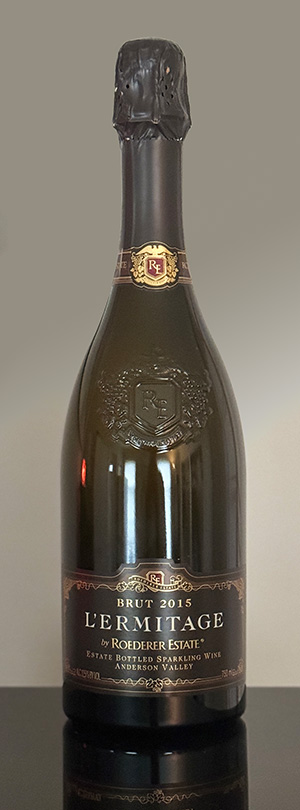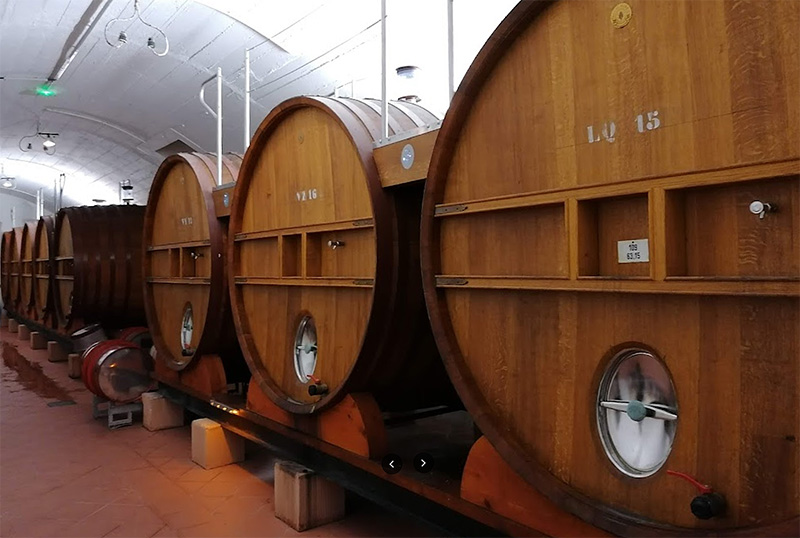
Louis Roederer [Road-ur-ur], a distinguished champagne producer situated in Reims, France, traces its origins back to 1776, when it began as Dubois Père & Fils. While its early days were marked by still wine production, the focus soon evolved to embrace the art of crafting fine champagnes. The business underwent a transformation under the stewardship of Louis Roederer in 1833 when he not only inherited but also renamed the company for himself. He boldly ventured into international markets, focusing particularly on Russia. This endeavor gained him immense recognition, including from Tsar Nicolas II, who appointed Louis Roederer as the official wine provider to the Imperial Court of Russia.
Created in 1876, the wine made for Nicolas’ grandfather, Alexander II, was the first Cuvée de Prestige (Prestige Cuvée) of Champagne and is called Cristal, referring to the unusual clear glass of the bottle. The Tsar had pointed out to his sommelier that the design of a standard champagne bottle made the beautiful color and effervescence of champagne invisible to the eye. He therefore instructed Roederer that his personal cuvée be served in bottles made of transparent crystal glass with a flat bottom (allegedly to foil the insertion of explosives in the indentation by would-be assassins) to remedy this defect. Thus was Cristal born, and the first notion of a premium cuvée. For more than a century, the appearance of the patented Cristal bottle has remained unchanged. After the fall of the Russian monarchy in 1917, Roederer decided to continue producing Cristal and to market it internationally, and it remains one of the world’s most sought-after champagnes in the world.
Despite encountering financial challenges due to events like the Russian Revolution and U.S. Prohibition, Roederer emerged as a premier Grandes Marques producer. In the 1930s, Camille Olry-Roederer took charge after marrying Léon Olry-Roederer. The 1970s saw Jean-Claude Rouzaud, a descendant of the Olry-Roederer family, take the helm. Focusing on modernization and expansion, he shaped Roederer Champagne’s contemporary identity.
Today, it stands as one of the few champagne houses that remain independently operated and family-owned. The estate vineyards encompass 590 acres [240 hectares] that produce approximately two-thirds of the grapes required for their champagne production. (The remainder is sourced from long-standing farmer partners.) Vineyards are strategically dispersed across Champagne’s prominent zones of Montagne de Reims, Vallée de la Marne, and Côte des Blancs.

Like most producers around the world, Roederer Champagne has embraced sustainability. 185 estate acres [75 hectares] adhere to biodynamic principles, making Roederer a pioneer in sustainable viticulture. 285 acres [115 hectares] are farmed organically. Since the 2021 harvest, these plots have borne the official “AB” [agriculture biologique] organic certification, symbolizing their embrace of organic viticulture. They earned the prestigious Robert Parker Green Emblem in 2021 as well, a recognition that reflects their commitment to sustainable viticulture, acknowledging a profound dedication to environmental preservation and biodiversity.

Roederer Estate L’Ermitage Brut 2015
Despite the French nomenclature, this wine is a product of Roederer’s Napa Valley operation, where they make my favorite California sparkler, Roederer Estate Brut. An excellent value, it is fresh and crisp with elegant bubbles, and features pear and subtle spice flavors. Frankly, I think it is equal to or better than this much pricier selection, but your mileage may vary.
Roederer Estate only sources estate-grown fruit, a rarity among California producers. The vines are organically and biodynamically farmed with an open lyre trellis system
Carrying on the tradition of Champagne Louis Roederer in France, Roederer Estate produces its sparkling wines in the traditional French méthode traditionelle and adds special oak-aged reserve wines to each blend. Following disgorgement, this L’Ermitage was aged an additional six months (minimum) on the cork prior to release.
L’Ermitage debuted with the 1989 vintage. This release is composed of 52% Chardonnay and 48% Pinot Noir, of which 4.9% was aged reserve wine from 2010, 2012, and 2014. The wine pours a quite pale light straw color, with a medium fizz. The nose is very delicate, with just a hint of yeast. There is a lively acidity on the palate, which features plenty of citrus. Think “lemon-lime Sprite soda,” without the sweetness. The flavor profile is super fresh, with essentially no bready notes (which I would have liked to see some of.) The lively acidity is offset by a surprisingly rich mouthfeel. The ABV is 12.4%. 3,649 cases were made.
And here’s an idea: serve this with fried chicken. Seriously.
Top of page: https://winervana.com/blog/
